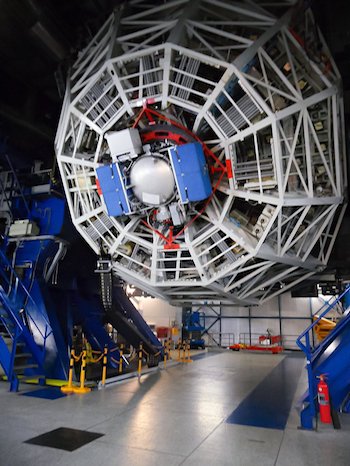ESO, in collaboration with the Breakthrough Initiatives, has modified the Very Large Telescope mid-infrared imager (VISIR) to greatly enhance its ability to search for potentially habitable planets around both components of the binary Alpha Centauri, part of the closest stellar system to the Earth. Apart from this specific goal, a variety of science cases will benefit from the enhanced sensitivity and point spread function contrast. The community is invited to participate in this opportunity to carry out unique science and thus to demonstrate the scientific capabilities of this modified instrument. A Call for Proposals has been issued and the community is invited to submit proposals for the NEAR science demonstration using the new Phase 1 web interface.
NEAR Science Demonstration: Call for Proposals

The NEAR (New Earths in the Alpha Centauri Region) concept combines adaptive optics using the deformable secondary mirror (DSM) at Unit Telescope 4, annular groove phase mask (AGPM) coronagraphy optimised for the most sensitive spectral bandpass in the N-band, and novel fast chopping techniques (up to 10 Hz) using either the DSM or an internal chopper (based on a concept for longer wavelengths invented by the microwave pioneer Robert Dicke). The internal chopper alternates between sky and an internal blackbody adjusted in temperature to match the sky brightness. VISIR N-band spectroscopy with AO is also possible. Spectroscopic observations must be compatible with pupil-stabilized tracking, i.e., the field of view rotates with respect to the slit.
With AO and fast chopping NEAR increases the sensitivity by about a factor 3 with respect to classical VISIR observations in all N-band filters. The sensitivity in broad-band filters like B10.7 or the new NEAR filter (10-12.5 μm) is better than 1 mJy (10 σ/hr).
The deadline for proposal submission is 7 August 2019, 12:00 CEST and observations will be carried out in September and December.
